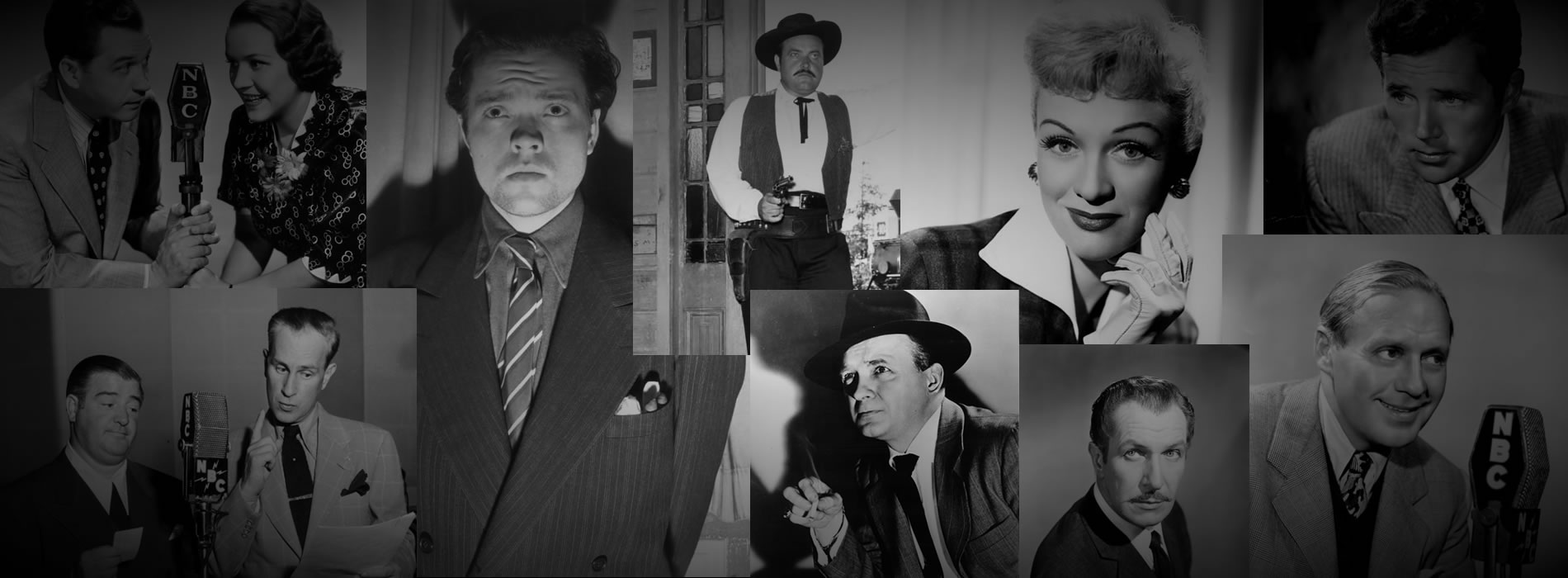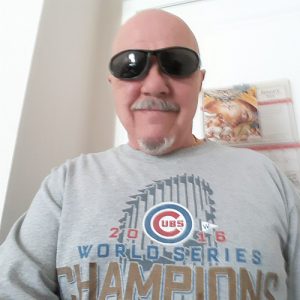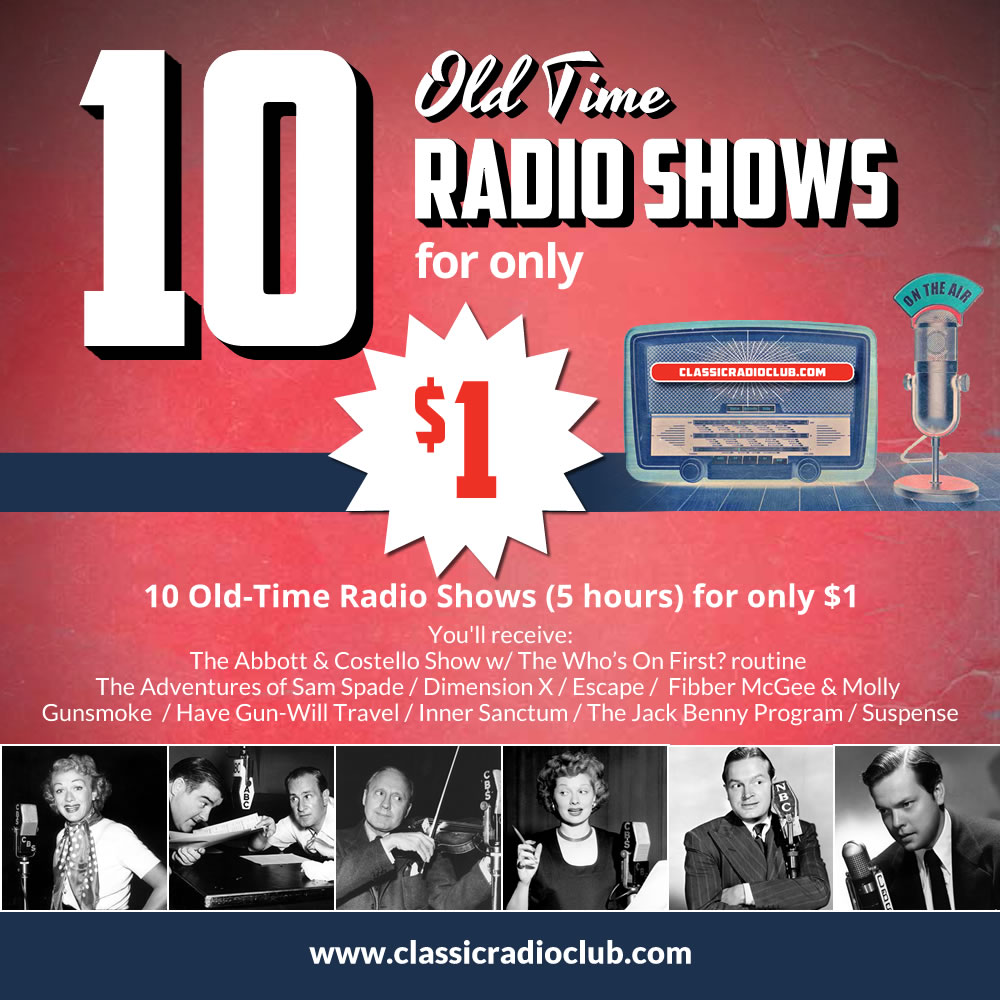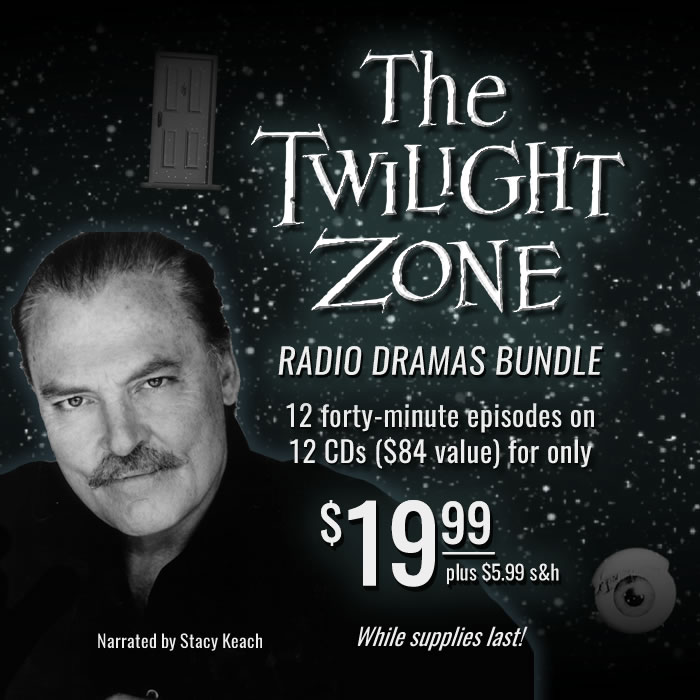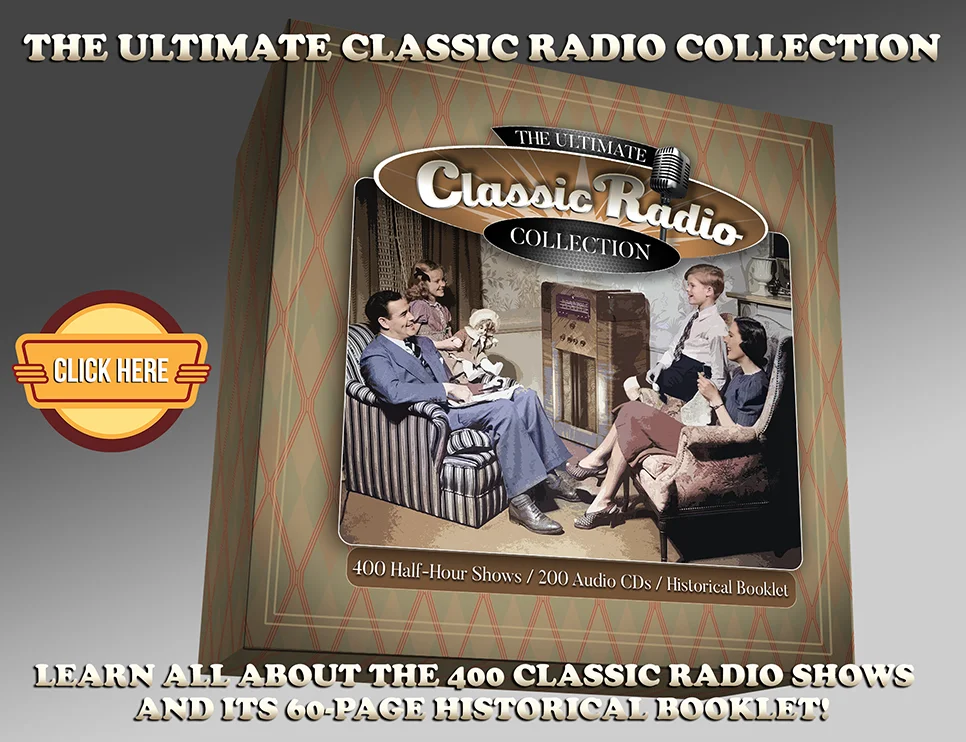
NEWSLETTER | VOL. 3, JULY 2021
Welcome to this month’s edition of The Hollywood 360 Newsletter, your place to get all the news on upcoming shows, schedule and interesting facts from your H360 team!
Carl’s Corner
by Carl Amari
Hello everyone – here’s the Hollywood 360 newsletter, July 2021 Vol. 3. As someone on our mailing list, you’ll receive the most current newsletter via email on the first day of every month. If you don’t receive it by the second day of the month, check your spam folder as they often end up there. If it is not in your regular email box or in your spam folder, contact me at carlpamari@gmail.com and I’ll forward you a copy. If you’d like to sign up a friend to receive this free monthly newsletter, use the bar at the top to sign them up. You’ll notice that we include a schedule of all the classic radio shows we’ll present on Hollywood 360 each month. I’ll write an article on one of the classic radio series that we’ve scheduled to air and include a photo. The week of July 17th, 2021 we’ll be airing an episode of THE MILTON BERLE SHOW so here’s my article on this great comedy series and a photo.
Milton Berle made his television debut way back in 1929, for an experimental scanning-wheel TV show in Chicago. Ever heard of that technology? That’s because no one paid much attention to it; everyone in America was tuned to their radio shows. It would take 20 years for TV to become sophisticated enough to draw an audience.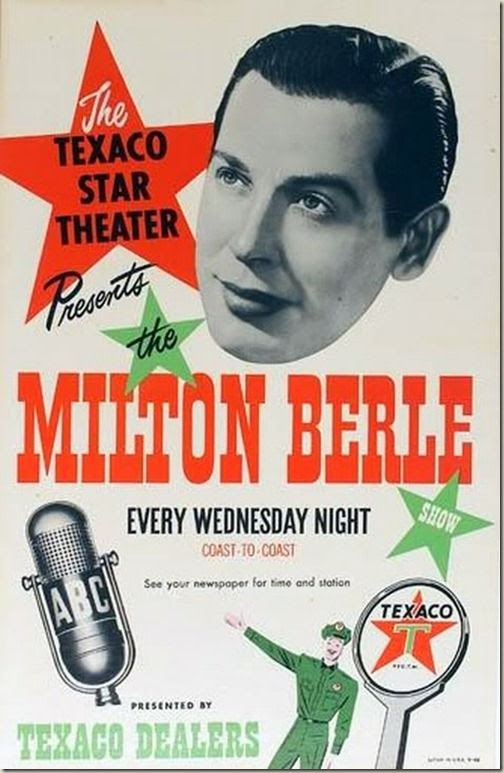
From 1934 to 1936, Milton Berle was heard on radio as a semi-regular on The Rudy Vallee Hour, and from the late 1930’s through the 1940’s he attracted publicity as a regular on The Gillette Original Community Sing as well as many other radio programs.
In 1948, he had a radio program of his own on ABC called The Texaco Star Theater, which Berle called “the best radio show I ever did.” Hollywood came knocking about the in the ‘40s, and Berle tried acting for the silver screen, giving the greatest performance of his career as the Jewish cop in Otto Preminger’s 1943 film Margin for Error.
Milton Berle never really scored a hit in either radio in movies, but as it turned out he was made for television. The TV version of The Texaco Star Theater lasted from 1948 to 1956 and Berle—“Uncle Miltie,” or “Mr. Television” as he became known to the generation who grew up with him—did it all as host.
The show was TV’s first big hit. In 1950, the first year the Nielsen ratings were established, The Texaco Star Theatre was the highest-rated program on the air with a 61.6 rating. (For comparison, the most popular network shows on TV these days are lucky to get a Nielson rating of 7.) The show alone is credited with causing TV ownership to soar from about 500,000 sets in in 1949 to 30 million when the show ended in 1956.
And it was all about Milton Berle. It did not matter who the celebrity guests were: ventriloquists, comedians, actors, authors, poets, clowns or singers… the spotlight remained on Mister Television.
However, the show slowly ran out of fresh ideas, and by 1955 attention was turning to a new show: The Honeymooners. After the show ended, Berle played to packed showrooms in Las Vegas for years and made numerous appearances in movies and TV shows.
Berle once credited his survival as a television icon with a 30-year contract with NBC in 1951. Back then CBS was making power play for radio and television comedians, forcing NBC to sign semi-lifetime contracts with their biggest stars. Groucho Marx once joked about this saying: “30 years with NBC? That’s not a contract. That’s a sentence!”
In 1984, Milton Berle was inducted into the Television Hall of Fame, and in 1991, became the first entertainer inducted into the International Comedy Hall of Fame. He was awarded two stars on the Hollywood Walk of Fame. One for Radio at 6771 Hollywood Boulevard and another for Television at 6263 Hollywood Boulevard in Hollywood, California.
LEND ME YOUR EARS | THIS MONTH’S SONG: AMERICAN PIE, Don McClean (1971)
by Lisa Wolf
“Writing songs is a lonely thing. It’s where you get into yourself, and I had that (song) in my mind for a couple of months…this is how the form of the song established itself. I kept the first verse slow. Later on, three months later, I wrote five more verses of the same length, following forward with this idea, almost in a rock dream kind of idea. Then I slowed down the fifth verse so it starts slow, rocks in the middle and slows at the end. The form of this song is different from almost any song you would hear. I love that. I thought it was great. I love the title, “American Pie.” ~ Don McLean
In 1959, a private plane carrying musicians J.P. “The Big Bopper” Richardson, Ritchie Valens, and Buddy Holly crashed outside of Clear Lake, Iowa. Taking off in bad weather, the plane crashed, killing everyone aboard. Thirteen years later, Don McLean wrote a song about this tragedy called “American Pie” – an 8½ minute legendary song with an iconic lyric about “the day the music died.” “People ask me if I left the lyrics open to ambiguity…of course I did. I wanted to make a whole series of complex statements. The lyrics had to do with the state of society at the time.”
“American Pie” was one of the last songs McLean wrote for the American Pie album. Strumming the guitar, he started to think back to his childhood, the neighborhood where he grew up, and being a paper boy for the Standard Star. He remembered Buddy Holly. He remembered the day he cut open the bundle of papers on the doorstep for him to deliver, and there, on the front page, was the story of the death of Buddy Holly, Richie Valens and the Big Bopper. He remembered being in shock while he delivered the papers on his route.
He wrote:
A long, long time ago, I can still remember how that music used to make me smile
And I knew if I had my chance that I could make those people dance
And maybe they’d be happy for a while
But February made me shiver, with every paper I’d deliver
Bad news on the doorstep I couldn’t take one more step
I can’t remember if I cried when I read about his widowed bride
But something touched me deep inside, the day the music died.
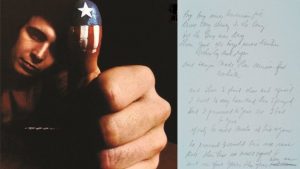
The original 16-page annotated manuscript of the lyrics has been sold at auction for $1.2 million at Christie’s in New York.
Vince’s Verbiage
by Carl’s Crabby Brother Vince
Growing up in Chicago in the late 1950’s and 60’s I became a Chicago Blackhawks fan because of my older and wonderful cousin Anthony Farace. Along with his brother Vince they had season tickets for the Blackhawk games back then. Sometimes when his brother couldn’t make it to a game he would take me. They had great seats at the old Chicago Stadium on Madison St. Center ice in the mezzanine. Many times I saw the likes of Superstars Bobby Hull & Stan Mikita make the opposing goalies “shiver in their skates.” My cousin Anthony is also a huge Cubs fan. He took me to the MLB All-Star game at Wrigley Field in 1962 when I was 10 years old. What a treat that was. Thanks again cousin. So, as I entered my teens I bought a pair of hockey skates and all the pads, hooked up with friends and actually got pretty good at the game. We then moved to Schiller Park when I was 15 and I met new friends while going to a new school. These new friends loved playing hockey as much as I did. One of these new buddies John had a father who was friends with a fine Blackhawks defenseman by the name of Pat Stapleton. Mr. Stapleton would often come to my friends house and I got to know him pretty well. One night he asked my friend if he wanted to go to his “Hockey School” in Canada when school ended for the summer. Of course my friend John said yes. Then Pat Stapleton turned to me and said “Vince, would you like to go too?” Needless to say I was blown away by this offer and told him “yes, if my parents will let me.” So, when school ended my friend John, his father and me drove to Sarnia, Canada where Pat had his hockey school. He also owned a farm maybe half hour away. That’s where we lived for a whole month. We would get up every morning very early. Pat’s wife would make us all breakfast. Pat would then drive us all to his hockey school for hours of training and skating. Each day after these “rigorous workouts”, when we got back to the farm Pat had chores for us to do. One of which included babysitting for his 2 year old son Mike when the adults wanted to go out for the evening . Little Mike would go on years later to become a great player in his own right. That was our payment for the FREE food, lodging & schooling Pat Stapleton provided to us. It was a summer I will never forget! Sadly, Pat Stapleton passed away in April, 2020. After all these years I still think of all the fun we had in Sarnia, Canada in the summer of 1968. Thanks Pat and may you rest in peace.

Observations on the Obscure: Actor Maurice Wells
by Karl Schadow
Would you recognize him in a radio program, television episode or motion picture? Maurice Wells was one of hundreds of character actors of the entertainment industry whose achievements deserve further illumination. The Schuyler, Nebraska native’s early activities on the stage have been well-documented and thus, will be briefly mentioned below. It is his contributions to those media noted above that will be the major focus of this article.
During the 1920s, Wells acted and later directed performances at the prestigious Pasadena Playhouse. One highlight of this tenure was co-starring with Lurene Tuttle in The Prince Chap. In 1928, Wells moved east to become a member of New York’s Theatre Guild where he performed on Broadway in Major Barbara and Pygmalion. He also toured with this organization in various productions. In the 1930s, he continued his theatrical endeavors in such plays as Between Two Worlds and The American Way. Throughout his career, Wells often spent the summer months as a member of leading stock companies including Stony Creek Theatre (Connecticut), Westchester Playhouse (Mt. Kisco, New York) and the Berkshire Playhouse (Stockbridge, Massachusetts).
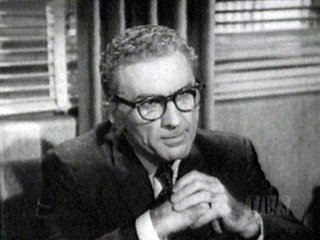
Maurice Wells
Though his performances on stage provided him steady work during the 1930s, he did have the opportunity to engage in selected radio activities while in New York. As early as 1932, he participated as a member of the Una Clayton Players in a series of weekly, quarter-hour, mid-afternoon sketches on WOR. In the 1936-37 NBC- Blue serial Bambi which starred Helen Hayes, Wells portrayed Western writer “Bad Bill” Hawks. On September 20, 1937 he was one of eighteen chosen to enact Maxwell Anderson’s first radio play The Feast of Ortolans. During the latter part of the decade Wells secured supporting roles in the daytime serials, Big Sister and Your Family and Mine.
In the early 1940s, he became a regular on the NBC anthologies Radio Guild and Great Plays. His initial main credited role was that of British journalist George Peabody in the 1943 Mutual series, Foreign Assignment. In December 1946, he served as the first Librarian of that network’s Crime Club venture. After several weeks the program’s broadcast schedule shifted with Barry Thomson becoming the new bibliognost. (Despite what many print and online sources may otherwise indicate, Raymond Edward Johnson did not function as the Librarian in the Crime Club.) During the summer of 1947, Wells teamed with former fellow stock player Parker Fennelly as their firm’s legal partners in Lawyer Tucker. Earlier that year, Wells was first heard in perhaps his most curious role of the medium. In several episodes spanning four seasons of The Shadow, he provided the voice of Lamont Cranston’s underworld contact, Adolphus Poindexter. Interestingly, it was either the-man-about-town or Margot Lane (but not The Shadow) who met with this individual to obtain pertinent information on hoodlums. See link to “The Wigmakers of Doom Street.”
Wells continued to be utilized on various soap operas including Front Page Farrell and Just Plain Bill into the early 1950s.
Maurice Wells involvement in television spanned nearly four decades. During the medium’s experimental era, he acted in at least three adaptations of stage plays. These live, local telecasts via the NBC station in New York included “The Dover Road” (October 18, 1939), “The Drums of Oude” (July 31, 1940) and “Blind Alley” (November 21, 1947). Wells also participated in an NBC extravaganza of “Macbeth” on May 1, 1949. In the early 1950s he had character roles in the DuMont Network series The Shadow of the Cloak and Hands of Mystery. Later he joined the comedy scene for several 1954 episodes of Ethel and Albert as the couple’s neighbor. During the late 1950s and early 1960s he was cast in several westerns including Bronco, Tales of Wells Fargo and Shotgun Slade. See episode of latter series here.
His work in this genre continued throughout the 1960s on such series as Temple Houston and The Big Valley. During this decade he was also featured on several episodes of Perry Mason. His last known network television appearance was on Marcus Welby, M. D. in 1974.
From the 1950s through the early 1970s, Maurice Wells performed in many Warner Bros. releases. Most of these were non-credited roles in such films as Hitchcock’s The Wrong Man (1956), Brainstorm (1965) and Get To Know Your Rabbit (1972). However, in Rome Adventure which the studio debuted in 1962, Wells was acknowledged on screen. In two additional films, Guns of Diablo (M-G-M, 1965) and Panic in the City (United Pictures, 1968) he also received supporting cast billing.
On June 25, 1978, Maurice Wells succumbed to cancer at age 74. Help continue his legacy for contributions to the entertainment industry. If you have identified him in radio or television programs, share this information with the author, email khschadow@gmail.com

MartinGrams.biz: Inner Sanctum Mystery
by Martin Grams
From 1945 to 1946, the Thomas J. Lipton Tea Company sponsored Inner Sanctum Mystery, a creepy mystery radio program that aired during prime time over CBS. Prior to 1945, the program was sponsored by Carter’s Little Liver Pills (starting in 1941) and in 1946 Emerson Drug took over the bankroll. During that one season under sponsorship with Lipton, the program underwent a number of changes. Raymond Edward Johnson, the program’s
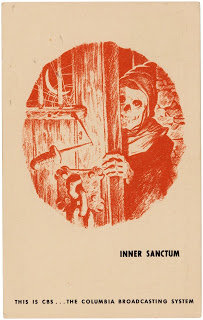
Inner Sanctum postcard
original host, was replaced by Paul McGrath. Johnson became an overnight celebrity as a result of the program, receiving more fan mail than the program itself. When Johnson joined the Army, McGrath took over as the new host (without the name “Raymond”). In December 1945, Johnson delayed his decision to return to Inner Sanctum pending a choice for a Broadway show. This led to Johnson getting an agent and since director Himan Brown preferred to avoid agents so he could pay celebrities minimal (vs. paying an agent ten percent on top of the actor salary) so McGrath became the permanent host. Lipton added a female element named Mary Bennett to assist with the commercials. To this day, one of the two big mysteries of the radio program is whether Mary Bennett was a real person or a fictional name for the commercial spokesman.
The second appears to have been solved, which might be the biggest old-time radio mystery to be solved this year. During the commercial breaks, a silver sterling pendant was offered as a premium, described as “attractive” and with a Chinese inscription. Yet, over all these decades, no one was able to turn up a Chinese pendant giving most historians cause to suspect they were never mailed out. This summer a collector consigned a unique item to Hake’s auction house which caught the attention of numerous old-time radio fans… the Chinese pendant.
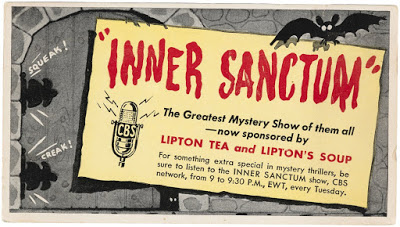
An ink blotter given away to clients.

Yes, it does exist!
Along with this elusive pendant in the same auction is a postcard for the consumer to submit 25 cents plus the box top of a Lipton package for additional pendants. The purpose of this pendant was to exceed an expectation set by the advertising agency, Young & Rubicam, to convince Lipton to renew their sponsorship. Lipton never did and the reason may have something to do with the pendant (possibly) never getting mailed out to radio listeners.
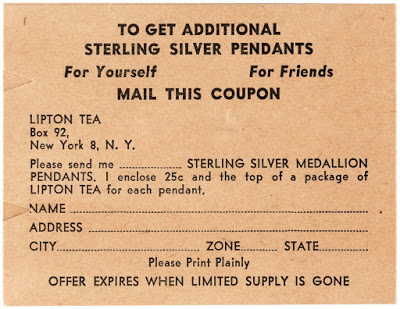
Regardless of the reason behind the discontinuance of sponsorship, the pendant does exist. A major find in the history of old-time radio.
Hollywood 360 Schedule
7/3/21
The Cavalcade of America 3/15/43 A Case for the FBI
Boston Blackie 9/17/46 The Apartment Swindler
The Charlie McCarthy Show 5/16/43 w/ Claudette Colbert
The New Adv. of Nero Wolfe 12/15/50 The Girl Who Cried Wolfe
The Hall of Fantasy 2/13/47 The Perfect Script
7/10/21
Yours Truly, Johnny Dollar 12/5/52 The James Clayton Matter
The Great Gildersleeve 10/4/42 Planting a Tree
The Whistler 10/2/44 Not If I Kill You First
Mr. & Mrs. North 12/9/47 Call Me Chu-Chu
The Voyage of the Scarlet Queen 7/10/47 Report of the White Jade Buddha
7/17/21
The Roy Rogers Show 11/6/52 Range War
Richard Diamond, Private Detective 3/21/52 The Hank Burton Case
The Milton Berle Show 12/2/47 A Salute to Public Service
The Lives of Harry Lime 1951 It’s a Knockout
My Friend Irma 2-16-48 Professor’s Concerto
7/24/21
Have Gun, Will Travel 2/15/59 The Return of Dr. Thackeray
Fibber McGee & Molly 10/26/48 Planting the Lawn Late
Lights Out! 4/20/43 Kill
Dimension X 9/29/51 Nightfall
The New Adv. of Michael Shayne 1948 The Case of the Deadly Dough
7/31/21
Boston Blackie 7/30/46 Mutiny Leads to Murder Aboard the Freighter Swan
Our Miss Brooks 5/29/49 Arguments, Arguments
Bold Venture 1951 Rudy Keijon
The Abbott & Costello Show 2/1/45 Costello Has his Day in Court
Let George Do It 2/27/53 The Fearless Clown
© 2021 Hollywood 360 Newsletter. The articles in the Hollywood 360 Newsletter are copyrighted and held by their respective authors.

